im trying to understand vectors and classes in c++. im in need of some help with creating an ascii image using the requirments below.
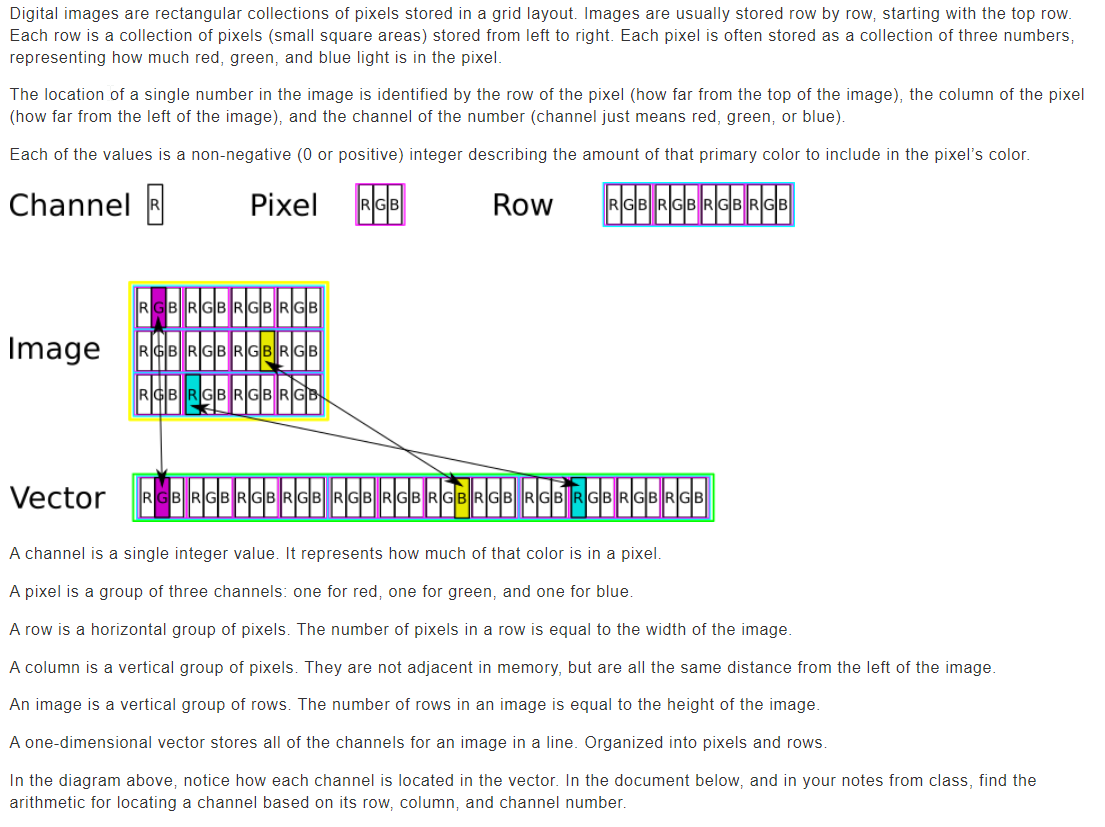

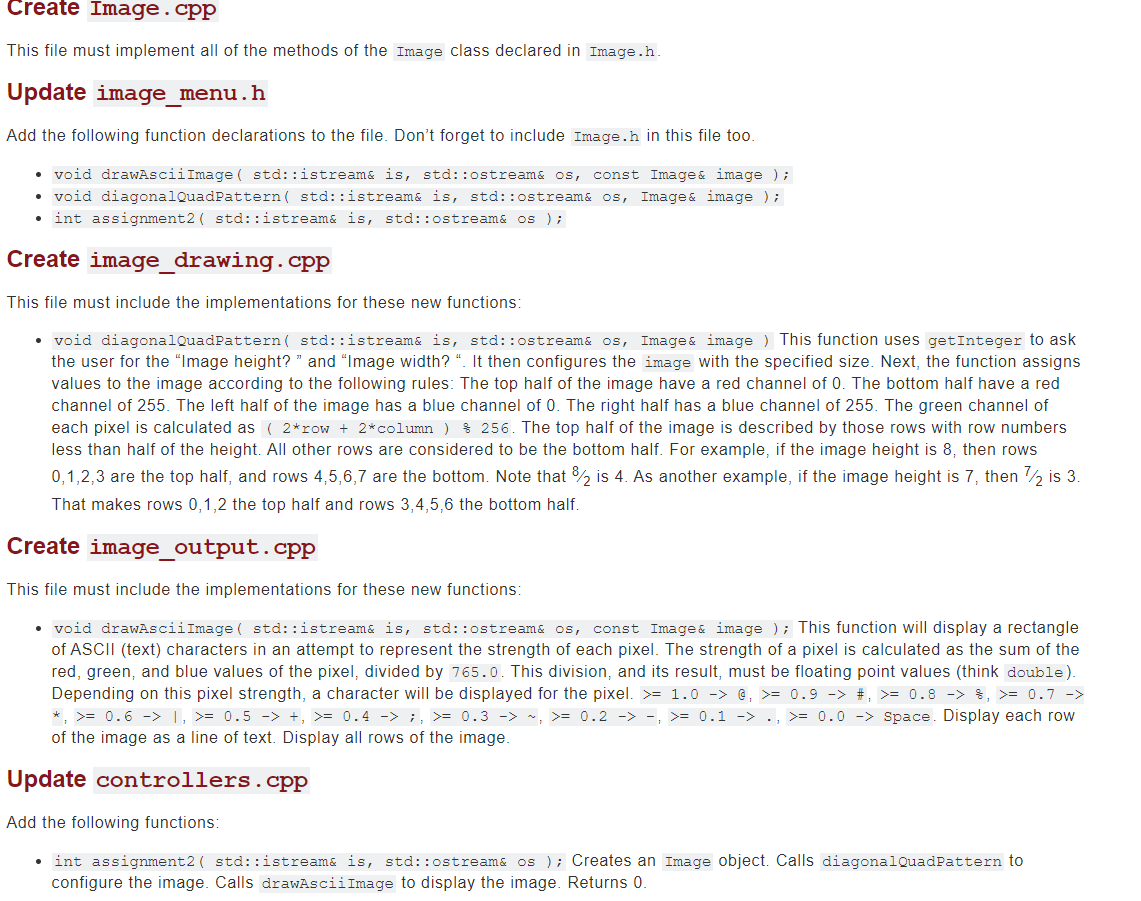

so that when its done it will look something like this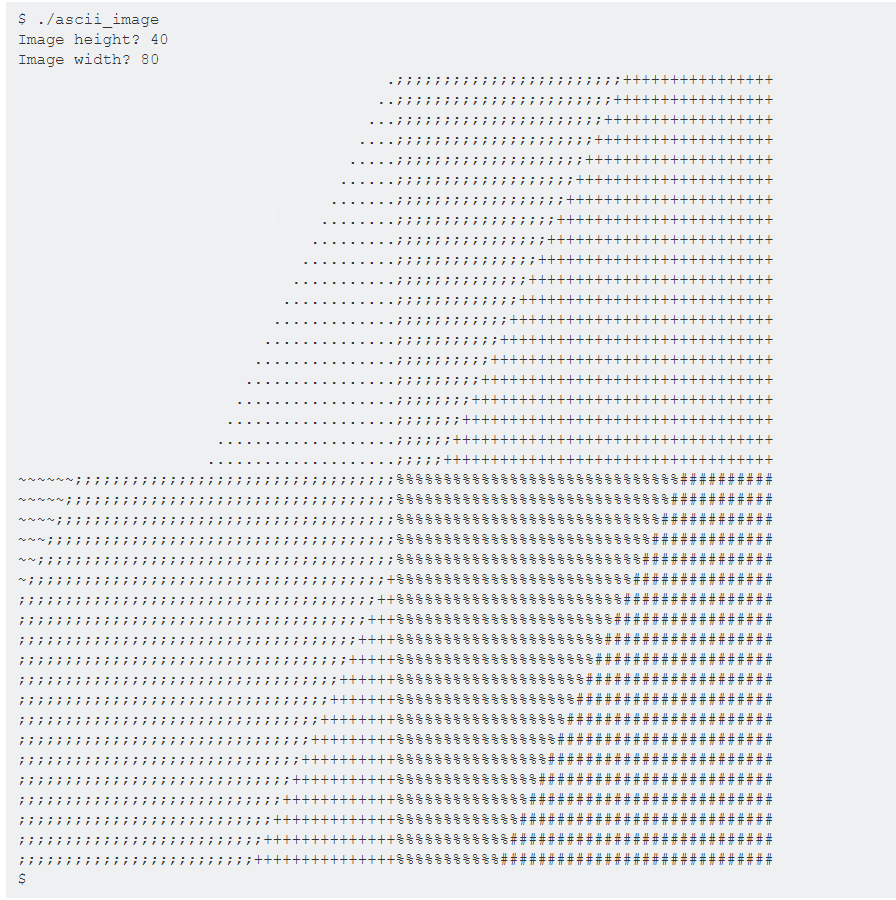 this is the code i have previously used for controllers.cpp
this is the code i have previously used for controllers.cpp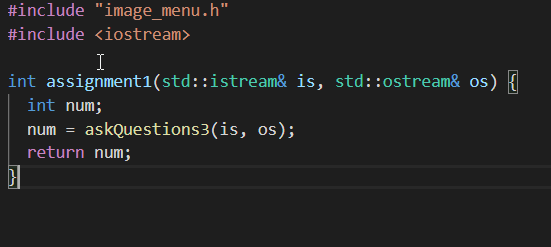 and then for my header file for refrence.
and then for my header file for refrence.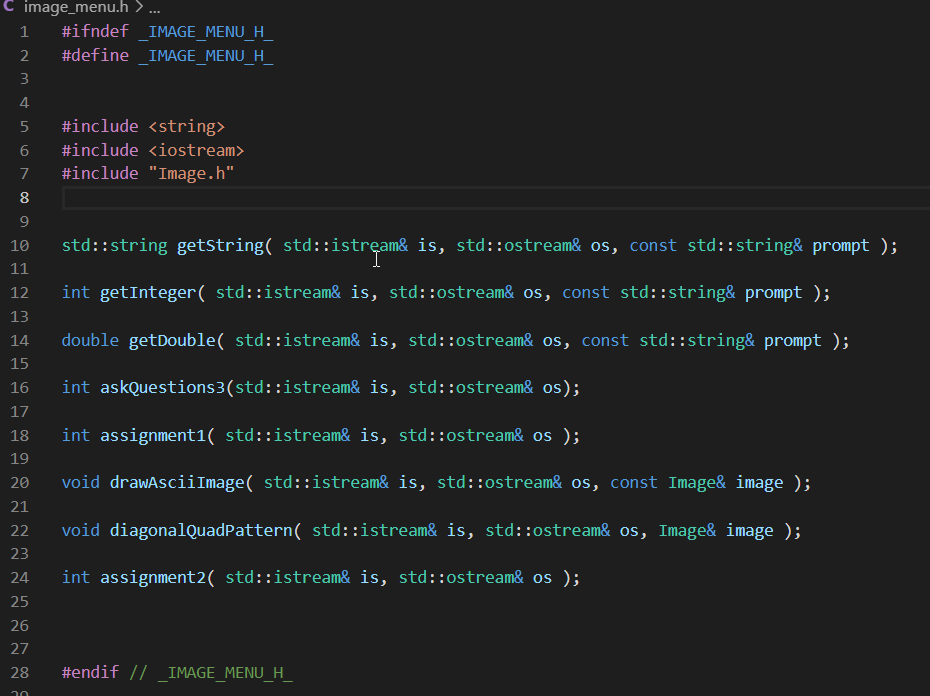
Digital images are rectangular collections of pixels stored in a grid layout. Images are usually stored row by row, starting with the top row. Each row is a collection of pixels (small square areas) stored from left to right. Each pixel is often stored as a collection of three numbers, representing how much red, green, and blue light is in the pixel. The location of a single number in the image is identified by the row of the pixel (how far from the top of the image), the column of the pixel (how far from the left of the image), and the channel of the number (Channel just means red, green, or blue). Each of the values is a non-negative (0 or positive) integer describing the amount of that primary color to include in the pixel's color. Channel 2 Pixel RGB Row RGB RGB RGB RGB IR GB RGB RGB RGB Image RGB RGB RGB RGB RGB RGB RGB RGB Vector RGB RGB RGB RGB RGB RGB RGBRGB RGB RGB RGBR A channel is a single integer value. It represents how much of that color is in a pixel. A pixel is a group of three channels: one for red, one for green, and one for blue. A row is a horizontal group of pixels. The number of pixels in a row is equal to the width of the image. A column is a vertical group of pixels. They are not adjacent in memory, but are all the same distance from the left of the image. An image is a vertical group of rows. The number of rows in an image is equal to the height of the image. A one-dimensional vector stores all of the channels for an image in a line. Organized into pixels and rows. In the diagram above, notice how each channel is located in the vector. In the document below, and in your notes from class, find the arithmetic for locating a channel based on its row, column, and channel number. Create Image.h This file must include the declaration of the Image class. Image Class Data Storage The Image class needs to store 3 integers for each pixel in the image. There are height rows of pixels in the image, and each row holds width pixels. That is a total of height times width times 3 integers for the data values. One way to store this many values is to have a std::vector as a data member, that is resize()'d when setWidth() or setHeight() is called. When a channel is set'd or get'd, into a pixel channel identified by row, column and channel, the index into the vector is calculated using (row * width * 3 + column * 3) + channel. The class will also need data members for width and height. Image Class Methods Your Image class must have the following methods. Image(); The default constructor. A default Image has 0 height and 0 width. The data vector should be resized to fit the width and height Image ( const int& height, const int& width ); A constructor with parameters for the height and width. The data members should be set according to theparameters. The data vector should be resized to fit the width and height. int getHeight ( ) const; Returns the height of the Image int getWidth() const; Returns the width of the image. bool indexvalid( const int& row, const int& column, const int& channel ) const; Checks if row, column, and channel are all within the legal limits. Returns true if they all are, and false otherwise. int index ( const int& row, const int& column, const int& channel ) const; Returns the index into the data vector for the location specified by row, column, and channel. int getChannel ( const int& row, const int & column, const int& channel ) const; Returns an int representation of the value in the data vector at the location specified by row, column, and channel. Uses the index method. Returns - 1 if the row, column, or channel is not valid. Uses the indexvalid method to check. void setHeight( const int& height ); Change the height of the image. The state of any new or existing pixels after this call is undetermined. Only non-negative values of height should be accepted. If the value is not accepted, make no changes. If a change is made, be sure to resize the data vector. void setWidth( const int& width ); Change the width of the image. The state of any new or existing pixels after this call is undetermined. Only non-negative values of width should be accepted. If the value is not accepted, make no changes. If a change is made, be sure to resize the data vector. void setChannel( const int& row, const int& column, const int& channel, const int& value ); Change the value of the location specified by row, column, and channel. Only store if the row, column, and channel are valid (uses indexvalid to check). If any of these is not valid, no changes should be made. Uses the index method to calculate the location. Create Image.cpp This file must implement all of the methods of the Image class declared in Image.h. Update image_menu.h Add the following function declarations to the file. Don't forget to include Image.h in this file too. void drawAsciiImage ( std::istream& is, std::ostream& os, const Image image ); void diagonalQuadPattern( std::istream& is, std::ostream& os, Image& image ); int assignment2( std::istream& is, std::ostream& os ); Create image_drawing.cpp This file must include the implementations for these new functions: void diagonalQuadPattern( std::istream& is, std::ostream& os, Image& image ) This function uses getInteger to ask the user for the "Image height?" and "Image width?". It then configures the image with the specified size. Next, the function assigns values to the image according to the following rules: The top half of the image have a red channel of 0. The bottom half have a red channel of 255. The left half of the image has a blue channel of 0. The right half has a blue channel of 255. The green channel of each pixel is calculated as ( 2*row + 2*column ) $256. The top half of the image is described by those rows with row numbers less than half of the height. All other rows are considered to be the bottom half. For example, if the image height is 8, then rows 0,1,2,3 are the top half, and rows 4,5,6,7 are the bottom. Note that 8/2 is 4. As another example, if the image height is 7, then 72 is 3. That makes rows 0,1,2 the top half and rows 3,4,5,6 the bottom half. Create image_output.cpp This file must include the implementations for these new functions: void drawAsciiImage( std::istream& is, std::ostream& os, const Image& image ); This function will display a rectangle of ASCII (text) characters in an attempt to represent the strength of each pixel. The strength of a pixel is calculated as the sum of the red, green, and blue values of the pixel, divided by 765.0. This division, and its result, must be floating point values (think double). Depending on this pixel strength, a character will be displayed for the pixel. >= 1.0 -> @, >= 0.9 -> #, >= 0.8 -> 8, >= 0.7 -> *, >= 0.6 -> 1, >= 0.5 -> +, >= 0.4 ->;, >= 0.3 -> >= 0.2 -> - , >= 0.1 -> ., >= 0.0 -> Space. Display each row of the image as a line of text. Display all rows of the image. Update controllers.cpp Add the following functions: int assignment2( std::istream& is, std::ostream& os ); Creates an Image object. Calls diagonalQuadPattern to configure the image. Calls drawAsciiImage to display the image. Returns 0. Create ascii_image.cpp This file must include the implementations of the following functions: int main(); This function should call assignment2, passing in std::cin and std::cout as the input and output streams to use. This function should return what assignment2 returns. .;;;;;;;;;;;;;;;;;;;;;;;;+ ..;;;;;;;;;;;;;;;;;;;;;;;++++++++ ;;;;;;;;;;;+- ;;;;;;;; :::::: ;;;;;;;;;;;;;;;;;;;;;+ ;;;;;;;;;;;;;;;;;;;+++ ;;;;;;;; . | || || || || | + E E E E E E E E E E E E E E E E E E E FIE + 1 - - - - - - - - - - - - - - - - - - - E E E E E E - - - - - - - - - - - - - - - - - - - -E E F E E + + + + + + + + + + + + + + + + + - 1 1 1 1 1 1 1 1 1 1 1 1 1 1 1 | | | . . de de de de de de : : : : : : : : : : : : : : + + + + + + + + + + + + + de de de de de de de de : : : : : : : : : : : : E E E + + + + + + + + + . dp de de ole de H + + de de de de de de de de de de de . op de 1 1 1 1 1 E E E FIE : : : dp de de de de de de de ole ole de de de de do 1 olo o de de de de de ce 1 dp de do ope do do do + op do ope do ope de de de de de de de de de de de de de de de de de de de de de de dp de de de de de ce de de de de de de de de de de de de de de de de de op de ole or ole or ole do or olo oo + + + + + + + + + ++::::::::::::::: ;;;;;;;;;;;;; + ;;;;;;;; ;;;;;;;;;;;+. ;;;;;;;;;++. +::::::::: +++::: ::::::++ $ ./ascii_image Image height? 40 Image width? 80 :::::::::::: ;;;;;;;;;;. ;;;;;;;;;;;;;;; ;;;;;;;;; ;;;;;;;;;;; #include "image_menu.h" #include
I int assignment1(std::istream& is, std::ostream& os) { int num; num = askQuestions3(is, os); return num; image_menu.h> ... 1 #ifndef IMAGE_MENU_H_ 2 #define IMAGE MENU H. 3 3 4. 5 6 7 #include #include #include "Image.h" 8 9 std::string getstring( std::istream& is, std::ostream& os, const std::string& prompt ); I int getInteger( std::istream& is, std::ostream& os, const std::string& prompt ); double getDouble( std::istream& is, std::ostream& os, const std::string& prompt ); int askQuestions3(std::istream& is, std::ostream& os); int assignment1( std::istream& is, std::ostream& os ); 10 11 12 13 14 15 16 17 18 19 20 21 22 23 24 25 26 27 28 void drawAsciiImage( std::istream& is, std::ostream& os, const Image& image ); void diagonalQuadPattern( std::istream& is, std::ostream& os, Image& image ); int assignment2( std::istream& is, std::ostream& os ); #endif // IMAGE_MENU_H Digital images are rectangular collections of pixels stored in a grid layout. Images are usually stored row by row, starting with the top row. Each row is a collection of pixels (small square areas) stored from left to right. Each pixel is often stored as a collection of three numbers, representing how much red, green, and blue light is in the pixel. The location of a single number in the image is identified by the row of the pixel (how far from the top of the image), the column of the pixel (how far from the left of the image), and the channel of the number (Channel just means red, green, or blue). Each of the values is a non-negative (0 or positive) integer describing the amount of that primary color to include in the pixel's color. Channel 2 Pixel RGB Row RGB RGB RGB RGB IR GB RGB RGB RGB Image RGB RGB RGB RGB RGB RGB RGB RGB Vector RGB RGB RGB RGB RGB RGB RGBRGB RGB RGB RGBR A channel is a single integer value. It represents how much of that color is in a pixel. A pixel is a group of three channels: one for red, one for green, and one for blue. A row is a horizontal group of pixels. The number of pixels in a row is equal to the width of the image. A column is a vertical group of pixels. They are not adjacent in memory, but are all the same distance from the left of the image. An image is a vertical group of rows. The number of rows in an image is equal to the height of the image. A one-dimensional vector stores all of the channels for an image in a line. Organized into pixels and rows. In the diagram above, notice how each channel is located in the vector. In the document below, and in your notes from class, find the arithmetic for locating a channel based on its row, column, and channel number. Create Image.h This file must include the declaration of the Image class. Image Class Data Storage The Image class needs to store 3 integers for each pixel in the image. There are height rows of pixels in the image, and each row holds width pixels. That is a total of height times width times 3 integers for the data values. One way to store this many values is to have a std::vector as a data member, that is resize()'d when setWidth() or setHeight() is called. When a channel is set'd or get'd, into a pixel channel identified by row, column and channel, the index into the vector is calculated using (row * width * 3 + column * 3) + channel. The class will also need data members for width and height. Image Class Methods Your Image class must have the following methods. Image(); The default constructor. A default Image has 0 height and 0 width. The data vector should be resized to fit the width and height Image ( const int& height, const int& width ); A constructor with parameters for the height and width. The data members should be set according to theparameters. The data vector should be resized to fit the width and height. int getHeight ( ) const; Returns the height of the Image int getWidth() const; Returns the width of the image. bool indexvalid( const int& row, const int& column, const int& channel ) const; Checks if row, column, and channel are all within the legal limits. Returns true if they all are, and false otherwise. int index ( const int& row, const int& column, const int& channel ) const; Returns the index into the data vector for the location specified by row, column, and channel. int getChannel ( const int& row, const int & column, const int& channel ) const; Returns an int representation of the value in the data vector at the location specified by row, column, and channel. Uses the index method. Returns - 1 if the row, column, or channel is not valid. Uses the indexvalid method to check. void setHeight( const int& height ); Change the height of the image. The state of any new or existing pixels after this call is undetermined. Only non-negative values of height should be accepted. If the value is not accepted, make no changes. If a change is made, be sure to resize the data vector. void setWidth( const int& width ); Change the width of the image. The state of any new or existing pixels after this call is undetermined. Only non-negative values of width should be accepted. If the value is not accepted, make no changes. If a change is made, be sure to resize the data vector. void setChannel( const int& row, const int& column, const int& channel, const int& value ); Change the value of the location specified by row, column, and channel. Only store if the row, column, and channel are valid (uses indexvalid to check). If any of these is not valid, no changes should be made. Uses the index method to calculate the location. Create Image.cpp This file must implement all of the methods of the Image class declared in Image.h. Update image_menu.h Add the following function declarations to the file. Don't forget to include Image.h in this file too. void drawAsciiImage ( std::istream& is, std::ostream& os, const Image image ); void diagonalQuadPattern( std::istream& is, std::ostream& os, Image& image ); int assignment2( std::istream& is, std::ostream& os ); Create image_drawing.cpp This file must include the implementations for these new functions: void diagonalQuadPattern( std::istream& is, std::ostream& os, Image& image ) This function uses getInteger to ask the user for the "Image height?" and "Image width?". It then configures the image with the specified size. Next, the function assigns values to the image according to the following rules: The top half of the image have a red channel of 0. The bottom half have a red channel of 255. The left half of the image has a blue channel of 0. The right half has a blue channel of 255. The green channel of each pixel is calculated as ( 2*row + 2*column ) $256. The top half of the image is described by those rows with row numbers less than half of the height. All other rows are considered to be the bottom half. For example, if the image height is 8, then rows 0,1,2,3 are the top half, and rows 4,5,6,7 are the bottom. Note that 8/2 is 4. As another example, if the image height is 7, then 72 is 3. That makes rows 0,1,2 the top half and rows 3,4,5,6 the bottom half. Create image_output.cpp This file must include the implementations for these new functions: void drawAsciiImage( std::istream& is, std::ostream& os, const Image& image ); This function will display a rectangle of ASCII (text) characters in an attempt to represent the strength of each pixel. The strength of a pixel is calculated as the sum of the red, green, and blue values of the pixel, divided by 765.0. This division, and its result, must be floating point values (think double). Depending on this pixel strength, a character will be displayed for the pixel. >= 1.0 -> @, >= 0.9 -> #, >= 0.8 -> 8, >= 0.7 -> *, >= 0.6 -> 1, >= 0.5 -> +, >= 0.4 ->;, >= 0.3 -> >= 0.2 -> - , >= 0.1 -> ., >= 0.0 -> Space. Display each row of the image as a line of text. Display all rows of the image. Update controllers.cpp Add the following functions: int assignment2( std::istream& is, std::ostream& os ); Creates an Image object. Calls diagonalQuadPattern to configure the image. Calls drawAsciiImage to display the image. Returns 0. Create ascii_image.cpp This file must include the implementations of the following functions: int main(); This function should call assignment2, passing in std::cin and std::cout as the input and output streams to use. This function should return what assignment2 returns. .;;;;;;;;;;;;;;;;;;;;;;;;+ ..;;;;;;;;;;;;;;;;;;;;;;;++++++++ ;;;;;;;;;;;+- ;;;;;;;; :::::: ;;;;;;;;;;;;;;;;;;;;;+ ;;;;;;;;;;;;;;;;;;;+++ ;;;;;;;; . | || || || || | + E E E E E E E E E E E E E E E E E E E FIE + 1 - - - - - - - - - - - - - - - - - - - E E E E E E - - - - - - - - - - - - - - - - - - - -E E F E E + + + + + + + + + + + + + + + + + - 1 1 1 1 1 1 1 1 1 1 1 1 1 1 1 | | | . . de de de de de de : : : : : : : : : : : : : : + + + + + + + + + + + + + de de de de de de de de : : : : : : : : : : : : E E E + + + + + + + + + . dp de de ole de H + + de de de de de de de de de de de . op de 1 1 1 1 1 E E E FIE : : : dp de de de de de de de ole ole de de de de do 1 olo o de de de de de ce 1 dp de do ope do do do + op do ope do ope de de de de de de de de de de de de de de de de de de de de de de dp de de de de de ce de de de de de de de de de de de de de de de de de op de ole or ole or ole do or olo oo + + + + + + + + + ++::::::::::::::: ;;;;;;;;;;;;; + ;;;;;;;; ;;;;;;;;;;;+. ;;;;;;;;;++. +::::::::: +++::: ::::::++ $ ./ascii_image Image height? 40 Image width? 80 :::::::::::: ;;;;;;;;;;. ;;;;;;;;;;;;;;; ;;;;;;;;; ;;;;;;;;;;; #include "image_menu.h" #include I int assignment1(std::istream& is, std::ostream& os) { int num; num = askQuestions3(is, os); return num; image_menu.h> ... 1 #ifndef IMAGE_MENU_H_ 2 #define IMAGE MENU H. 3 3 4. 5 6 7 #include #include #include "Image.h" 8 9 std::string getstring( std::istream& is, std::ostream& os, const std::string& prompt ); I int getInteger( std::istream& is, std::ostream& os, const std::string& prompt ); double getDouble( std::istream& is, std::ostream& os, const std::string& prompt ); int askQuestions3(std::istream& is, std::ostream& os); int assignment1( std::istream& is, std::ostream& os ); 10 11 12 13 14 15 16 17 18 19 20 21 22 23 24 25 26 27 28 void drawAsciiImage( std::istream& is, std::ostream& os, const Image& image ); void diagonalQuadPattern( std::istream& is, std::ostream& os, Image& image ); int assignment2( std::istream& is, std::ostream& os ); #endif // IMAGE_MENU_H




 this is the code i have previously used for controllers.cpp
this is the code i have previously used for controllers.cpp and then for my header file for refrence.
and then for my header file for refrence.






